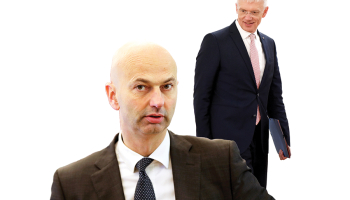
Rīgas Centrāltirgū. Foto - Zane Bitere, LETA
When we speak about inflation, we usually present a number that describes how much prices of a representative basket of goods have changed over the past year. In April 2024, the most recent data point available at the time of writing, inflation was 1.1%, i.e. prices of this representative basket of goods were 1.1% higher than in April 2023. This is way down from inflation’s peak, which was in September 2022 where prices were 22.2% higher than in September 2021, see Figure 1 where I start in January 2020 – when inflation was low and steady; before the pandemic started and obviously before Russia’s invasion of Ukraine.
But when the inflation rate changes so much, it can be instructive to look at some other measures of price changes for some deeper insight.
Figure 1: Inflation, year-on-year with monthly data, 2020-I – 2024-IV
Source: Official Statistical Portal of Latvia
Figure 2 shows how prices change on a monthly basis, the highest frequency at which we have such data (stock prices and exchange rates may be measured several times a day; inflation does not – too much data collection needed). The last entry here, for April 2024 is 0.5%, telling us that prices on average grew half a percent in April compared to March 2024. But it also tells us that in the past year (12 months), there have been five months where prices actually decreased on average, i.e. we observed deflation.
And Figure 2 is also useful in identifying the months where inflation really took off – February 2022 through July 2022, i.e. the first 6 months following Russia’s invasion of Ukraine where in particular energy prices and some food prices exploded.
Figure 2: Inflation, month-on-month, 2020-I – 2024-IV
Source: Official Statistical Portal of Latvia
And yet one more measure can be useful to identify what has happened to prices. What has happened overall to prices since the pandemic and then Russia’s invasion? Figure 3 shows the development of the Consumer Price Index since January 2020. I have set the index at that month to 100, meaning, that if my representative basket of goods cost 100 EUR in January 2020, it will now cost 133.61 EUR in April 2024, see Figure 3. Or said with different words: Accumulated inflation since the beginning of 2020 has been 33.6% – prices are indeed, on average, substantially higher than 4 ½ years ago, a fact which I guess everyone would agree to.
Figure 3: The Latvian Consumer Price Index, 2020-I – 2024-IV, 2020-I = 100
Source: Official Statistical Portal of Latvia and own calculations
This looks like a dramatic reduction of the purchasing power of our income but the average wage, again according to the official Latvian statistics, has actually risen 51% over the same period, implying an increase in real wages since 2020.
But whereas I am sure people are convinced that prices have risen a lot, I am not sure that everyone would agree that wages have risen even more. And who is that average, representative person anyway?
Morten Hansen is Head of Economics Department at Stockholm School of Economics in Riga and former Vice-Chairman at the Fiscal Discipline Council of Latvia

















